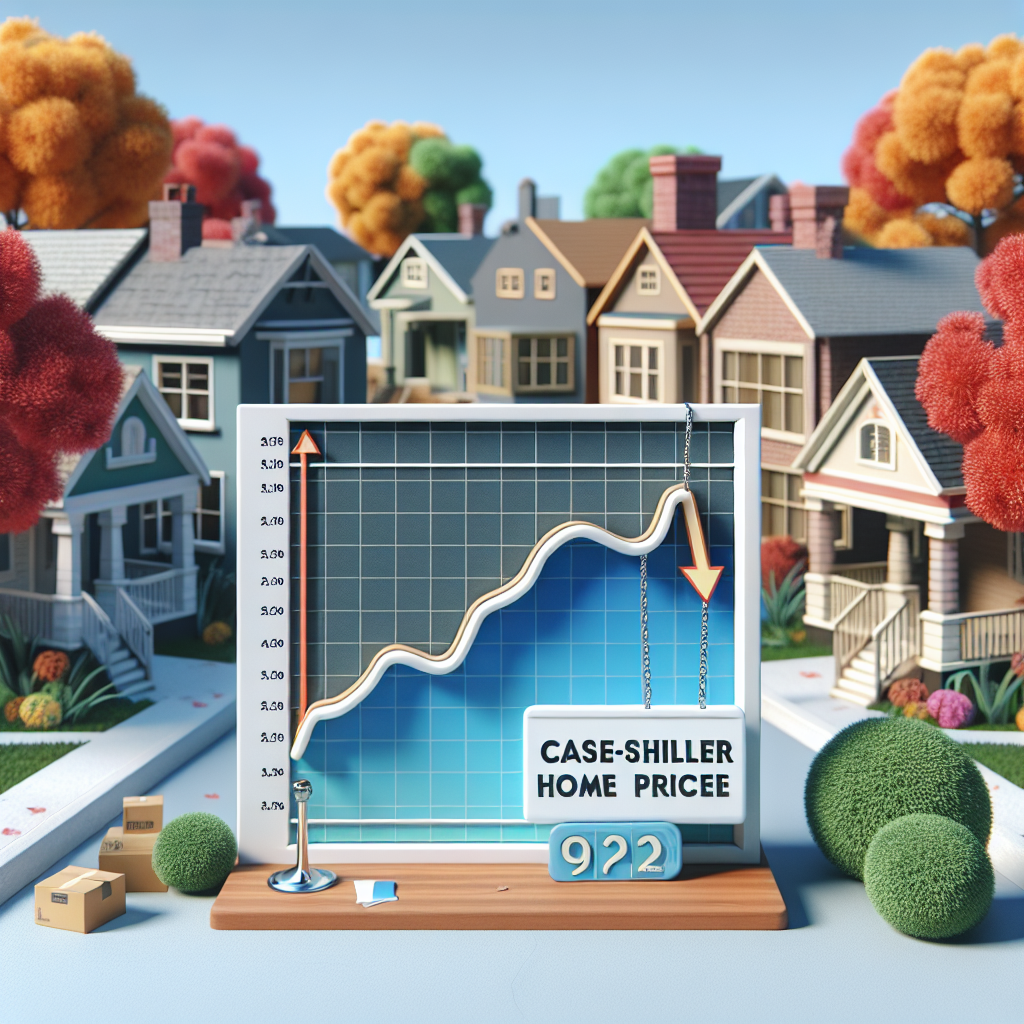September Sees Slowdown in Case-Shiller Home Price Growth
The U.S. housing market has been a focal point of economic discussions, especially in the wake of the COVID-19 pandemic. The Case-Shiller Home Price Index, a leading measure of U.S. residential real estate prices, has shown significant fluctuations over the past few years. As of September, the index indicates a noticeable slowdown in home price growth, raising questions about the future trajectory of the housing market.
Understanding the Case-Shiller Index
The Case-Shiller Index, developed by economists Karl Case and Robert Shiller, is a widely respected tool for tracking changes in the value of residential real estate. It provides a comprehensive view of price trends across 20 major metropolitan areas in the United States. The index is often used by economists, policymakers, and investors to gauge the health of the housing market.
Factors Contributing to the Slowdown
Several factors have contributed to the recent deceleration in home price growth:
- Rising Interest Rates: The Federal Reserve’s decision to increase interest rates to combat inflation has made borrowing more expensive, leading to a decrease in mortgage applications.
- Economic Uncertainty: Concerns about a potential recession have made both buyers and sellers more cautious, resulting in fewer transactions.
- Supply Chain Disruptions: Ongoing supply chain issues have delayed construction projects, limiting the availability of new homes.
- Affordability Challenges: With home prices having surged in previous years, affordability has become a significant barrier for many potential buyers.
Regional Variations in Price Growth
While the overall trend shows a slowdown, regional variations are evident. Some areas continue to experience robust growth, while others are seeing more pronounced slowdowns. For instance:
- Sunbelt Cities: Cities like Phoenix and Tampa have continued to see strong demand, driven by migration patterns and favorable climates.
- Coastal Metropolises: Areas such as San Francisco and New York have experienced more significant slowdowns, partly due to high living costs and remote work trends.
Case Studies: Impact on Buyers and Sellers
To better understand the implications of the slowdown, consider the following case studies:
- First-Time Homebuyers: For individuals entering the market, the slowdown could present opportunities to purchase homes at more reasonable prices. However, higher interest rates may offset these benefits.
- Real Estate Investors: Investors may find fewer opportunities for quick profits as price appreciation slows. This could lead to a shift towards long-term rental strategies.
Future Outlook
The future of the housing market remains uncertain, with several potential scenarios:
- Stabilization: A gradual stabilization of prices could occur if interest rates level off and economic conditions improve.
- Further Declines: If economic challenges persist, further declines in home price growth could be expected.
- Regional Disparities: Continued regional disparities are likely, with some areas recovering faster than others.
Conclusion
In conclusion, the September slowdown in Case-Shiller home price growth reflects a complex interplay of economic factors, regional dynamics, and market sentiment. While the deceleration may offer some relief to potential buyers, challenges such as rising interest rates and economic uncertainty continue to pose significant hurdles. As the market evolves, stakeholders must remain vigilant and adaptable to navigate the changing landscape effectively.



